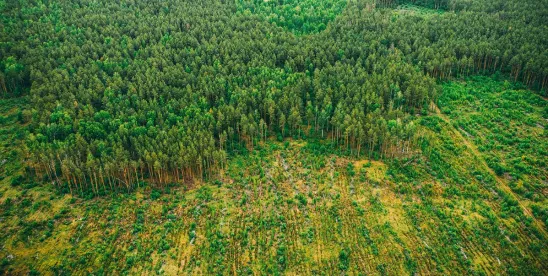In the context of commercial real estate transactions, due diligence is conducted to obtain and verify available information regarding a property’s attributes and characteristics, physical and environmental condition, ownership, and other information relevant to the property’s potential reuse and redevelopment.[1] The discussion of due diligence is often separated into environmental due diligence and real estate (or property) due diligence. While the former is conducted, in large part, to evaluate the environmental condition of a property and to satisfy the requirements for all appropriate inquiries (“AAIs”) as defined in the Comprehensive Environmental Response, Compensation and Liability Act (“CERCLA”),[2] the latter is conducted to identify attributes and characteristics about a property that affect the ability to transfer or reuse a property, such as zoning, potential liens, encroachments, and building conditions.[3] This article provides a general overview of the environmental due diligence process, which should begin as soon as possible to understand and potentially minimize any environmental risks and liabilities.
The environmental due diligence process typically begins with assembling the appropriate team, as gathering the team early avoids unnecessary heartache if environmental issues are discovered. Typically, this includes environmental attorneys, real estate attorneys, and environmental consultants. It is advisable to task your legal counsel with retaining your environmental consultant and managing that relationship. Not only does this allow for the environmental consultant’s opinions to be protected from discovery by the attorney-client privilege,[4] but it also allows you to have greater control over the outcome of the environmental consultant’s determination.
Additionally, environmental consultants typically provide a “form” engagement agreement, including a job-specific scope of work mixed with other more general form provisions that, if left unnegotiated, may severely limit the environmental consultant’s liability. You will be well-served to have your legal counsel negotiate the environment consultant’s agreement to best protect you, or at a minimum, to make you aware of any deficiencies or limitations in the agreement. In addition to liability limitations, consulting agreements often attempt to limit the timeframes for asserting claims potentially impacting otherwise applicable statutes of limitations or to narrow the scope of the investigation, precluding the availability of the AAI defenses.
Once retained with the properly negotiated agreement in place, the environmental consultant will likely begin the due diligence process with a Phase I Environmental Site Assessment (“ESA”). Typically, a Phase I ESA is conducted to meet the requirements for AAIs established under CERCLA and set out in the U.S. Environmental Protection Agency’s (“EPA”) regulations. A Phase I ESA is limited to a historical and “above surface” investigation.[5] While there are many benefits to environmental due diligence, the biggest benefit for prospective property owners is protection from liability for environmental risks, including liability under CERCLA.
In short, CERCLA addresses the cleanup of uncontrolled or abandoned hazardous waste sites, as well as accidents, spills, and other emergency releases of pollutants and contaminants into environmental media (e.g., soil, groundwater, surface water, sediment). A party may be liable under CERCLA for cleaning up hazardous substances located at a property that it owns or operates even if the party did not own the property at the time the hazardous substances were released.[6] CERCLA grants EPA, or, under certain circumstances, private parties – the authority to sue any current owner or operator of a contaminated property for costs associated with cleanup.[7] It is worth noting that past owners and operators are generally only liable if they owned the property at the time the hazardous substances were disposed of or otherwise released.[8]
Property owners, and even lessees,[9] may avoid liability, however, by conducting proper environmental due diligence. When CERCLA was amended in 1986, the “innocent landowner defense” was established, which creates a shield to liability if the owner “did not know and had no reason to know” about the contamination on the property prior to the purchase. When CERCLA was amended again in 2002, new liability protections were added, and the existing innocent landowner defense was clarified. Under the 2002 amendments, the liability protections were extended to parties who qualify as bona fide prospective purchasers, contiguous property owners, or innocent landowners who conduct AAIs into the potential contamination of the property.[10] Because the liability protections are self-implementing, all an entity must do to receive the protections provided by the amendments is comply with the requirements of the statute.
Importantly, there are different conditions for each of these landowner types.[11] However, there are also overlapping threshold criteria and ongoing obligations, or common elements, that all three landowner types must meet in order to obtain the liability protections afforded under CERCLA. The performance of AAIs is one such common element.
40 C.F.R. § 312.20 contains the requirements for AAIs, including (1) a Phase I ESA, (2) the collection of information about the property, and (3) searches for recorded environmental cleanup liens. The collection of information about the property includes (1) interviews with past and present owners, operators, and occupants, (2) searches for recorded environmental cleanup liens, (3) reviews of federal, tribal, state, and local governmental records, (4) visual inspections of the facility and of adjoining properties, and (5) the declaration by the environmental professional providing the Phase I ESA.[12] AAIs must be conducted within one year prior to the date of acquisition of the property,[13] and the information collected during the environmental due diligence period must be updated within 180 days of, and prior to, the date of acquisition of the property.[14]
It is important to note, however, that a Phase I ESA can, but does not always, satisfy the AAIs. For example, a prospective purchaser must also conduct a search for any recorded environmental cleanup liens and any activity-use limitations on the property. Most Phase I ESA agreements will exclude such a review. For this reason, it is important to have legal counsel manage the relationship with the environmental consultant to ensure all requirements of the AAIs have been satisfied.
Based on the results of the Phase I ESA, additional investigation may be necessary to better understand the type and extent of any releases or potential releases. Typically, a finding of a recognized environmental condition, or REC, will lead the environmental consultant to recommend additional work be performed. This additional investigation is conducted via what is typically referred to as a Phase II ESA. The Phase II ESA is an investigation that often requires collection and analysis of environmental and other media samples (e.g., soil, groundwater, electrical equipment, insulation).[15] A good reference of distinction between a Phase I ESA and a Phase II ESA is that a Phase I ESA is above ground and a Phase II ESA is underground (or sub-surface).
Another step in the environmental due diligence process is to conduct an environmental compliance review to determine the regulatory status of the property by considering which federal, state, and local environmental laws may apply based upon the environmental conditions, operating practices, and other factors. These environmental laws could include, for example, the Clean Air Act,[16] the Clean Water Act,[17] the Endangered Species Act,[18] the Resource Conservation and Recovery Act,[19] and the Toxic Substance Control Act.[20] Additionally, this review should consider any applicable state voluntary cleanup programs, state underground storage tank programs, and any wetlands determinations.
A prospective purchaser should carefully review a seller’s environmental compliance track record, including the seller’s permit history, permit conditions, and actual and potential enforcement status. Importantly, where a seller has a history of permit violations, this may subject a property to continuing and frequent investigations.
Another step in the environmental due diligence process is to determine whether any land use controls have been implemented regarding the property. These land use controls may include either institutional controls or engineering controls, used alone or in combination, to ensure protection of human health and the environment. While institutional controls are administrative or legal controls that minimize the potential human exposure to contamination by restricting the activities or use of a property or the use of a resource (e.g., groundwater), engineering controls are physical or engineered measures that may include, for example, various capping methods, vapor mitigation systems, or groundwater barriers or systems.
Starting the environmental due diligence process as early as possible is critical in allowing prospective purchasers to identify potential environmental risks and liabilities before they become deal killers or costly problems, as well as allows parties to mitigate such risks and liabilities.
[1] Revitalization – Ready Guide – Chapter 3: Reuse Assessment, EPA (June 11, 2024), https://www.epa.gov/land-revitalization/revitalization-ready-guide-chapter-3-reuse-assessment.
[2] 42 U.S.C. §§ 9601 et seq.
[3] Revitalization – Ready Guide – Chapter 3: Reuse Assessment, supra note 1.
[4] This may also provide protection in the form of the work-product doctrine, though this protection may be limited if litigation ultimately ensues.
[5] See 40 C.F.R. Part 312.
[6] See generally 42 U.S.C. § 9607.
[7] This is generally referred to as a cost-recovery action pursuant to 42 U.S.C. § 9607(b). CERCLA also provides for a contribution action, pursuant to 42 U.S.C. § 9613, which allows a potentially responsible party that has been required to pay response costs to assert a contribution claim against other potentially responsible parties to compel them to bear an equitable share of those costs.
[8] There are a number of different ways in which this has been applied to past owners and operators.
[9] In 2018, Congress passed the Brownfields Utilization, Investment, and Local Development Act, or the BUILD Act, which included revisions to CERCLA’s definition of a bona fide prospective purchaser to address lessee concerns about potential liability with the reuse of contaminated property. The revised definition now includes a person who acquires a leasehold interest in a property and meets certain criteria.
[10] See generally 40 C.F.R. § 312.1.
[11] Common Elements and Other Landowner Liability Guidance, EPA (Aug. 17, 2023), https://www.epa.gov/enforcement/common-elements-and-other-landowner-liability-guidance.
[12] A Phase I ESA should be conducted in accordance with the ASTM International Standard E1527-21 entitled “Standard Practice for Environmental Site Assessments: Phase I Environmental Site Assessment Process.” See 40 C.F.R. § 312.11.
[13] 40 C.F.R. § 312.20(a).
[14] 40 C.F.R. § 312.20(b).
[15] A Phase II ESA is most often conducted in accordance with the ASTM International Standard E1903-19 entitled “Standard Practice for Environmental Site Assessments: Phase II Environmental Site Assessment Process.”
[16] 42 U.S.C. §§ 7401 et seq.
[17] 33 U.S.C. §§ 1251 et seq.
[18] 16 U.S.C. §§ 1531 et seq.
[19] 42 U.S.C. §§ 6901 et seq.
[20] 15 U.S.C. §§ 2601 et seq.





 />i
/>i
